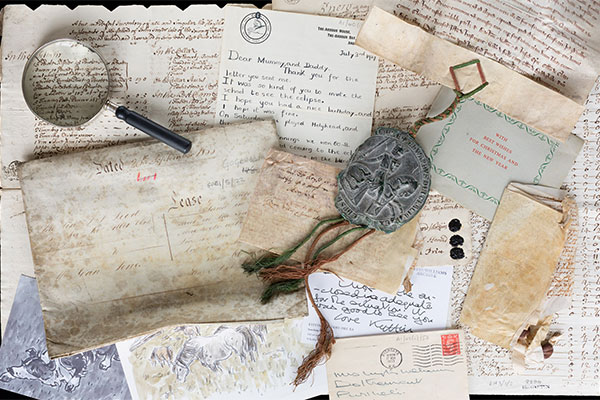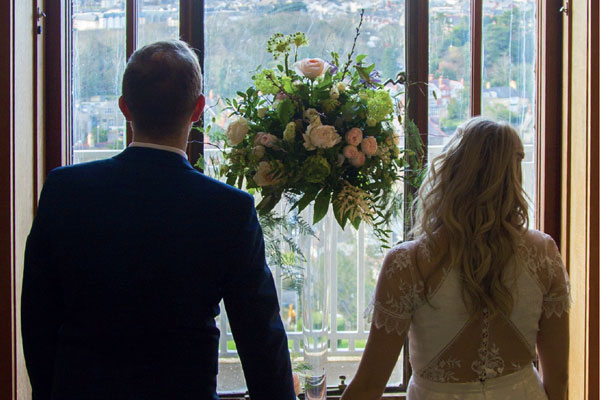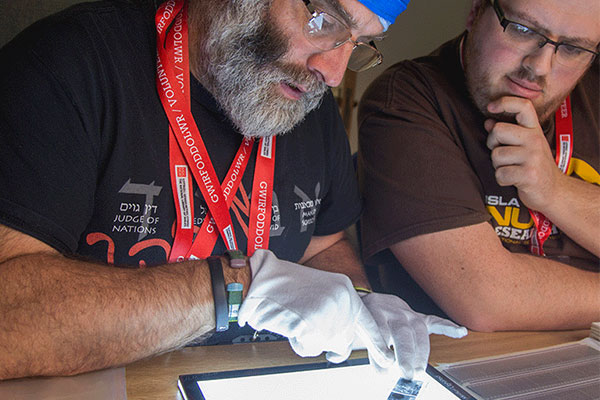The Library has recently catalogued and made available the papers of the Welsh artist Alfred Janes (1911-1999). Born in Swansea above his parent's fruit shop in Castle Square, Janes's artwork showed promise at an early age and in 1928 as a teenager his work was exhibited at the National Eisteddfod, Treorchy. He became known for his portraiture and in 1931 his portrait of fellow Swansea artist Mervyn Levy was much praised, following which Janes won a scholarship to the Royal Academy Schools in London.

There must have been something in the air of 1930s Swansea, for the Kardomah Café in Castle Street found itself playing host to a group of friends and colleagues who would all have a significant impact on the art and literature of the 20th century, including Alfred Janes, Daniel Jones, Charles Fisher, Mervyn Levy, John Prichard, Bert Trick, Vernon Watkins, and Dylan Thomas. Amongst this group of artists, writers, and poets Janes evolved his own signature style. His inspiration from other artists is clear to see from his collection of cuttings, postcards, and photographs of other artist’s works (C3/1), including Georges Braque, Picasso, Gaugin, Ben Nicholson, Paul Klee, Cezanne, Henry Moore, and Van Gogh, among many others. A battered and beloved copy of A. P. Laurie’s Simple Rules for Painting in Oils [?1932] (C2/3), signed by Janes resides in the archive together with his diaries (C1), which feature numerous sketches and miniature works of art among the shopping lists and dentist appointments.

In the mid-1930s Alfred Janes famously found himself sharing a flat in London with Thomas and Levy, while he took up his place to study art at the Royal Academy. A luggage tag found amongst his papers bears their address on Redcliffe Road, South Kensington (C4), an environment where Janes painted his most well-known portrait of Thomas in 1934. He returned to live in Swansea in 1936 and took up teaching at Swansea College of Art, before enlisting in wartime service where he was posted to Egypt to work in a prisoner-of-war camp; there he learned Swahili and Italian, with some of the friendships he made with the Italian prisoners lasting for the rest of his life. His papers include many letters written in Italian.

The archive also bears witness to what may possibly have been one of the last gatherings of the ‘Kardomah gang’. A photograph (E2), dated 1953, shows a sombre group around a kitchen table. The occasion was Dylan’s funeral, held at St Martin’s Chruch, Laugharne, and those in the photo include Jim Jones (brother of Daniel Jones), John Ormond, John Prichard, Alfred Janes, Irene Jones, Margaret Taylor, Charles Fisher, Mabley Owen, Daniel Jones, Mary Janes, and of course Florence, Dylan’s mother.
Janes moved to Dulwich in 1963 when he took up a lecturing post at the Croydon College of Art, and his archive contains many of his lecture notes (series D1). His teaching style encouraged students to really look at the depth of their subject and to see beyond what they were painting, a sentiment that was also echoed in a tribute to his late friend Thomas in November 1953:
‘It takes great courage and honesty and faith to tell what one has found, not only in the bright places, but also in the holes and corners of one’s soul’. (AJ, typescript of a tribute to Dylan Thomas, 17 November 1953, D5)

Throughout his career Janes became known for his portraits of the ‘Kardomah gang’ including those of Thomas (whom he painted and drew three times, in 1934, 1953, and 1964), Mervyn Levy (1931, 1935 and 1983), Daniel Jones (1947 and 1949), and Vernon Watkins (1949), as well as his more powerful and thought-provoking works such as ‘Salome’ (1938) and his painting of bombed-out Castle Street, Swansea, in the aftermath of the 1941 Blitz (1947). A figure in one of his earlier untitled portraits, that of a gentleman in jacket, waistcoat and tie painted in 1931, is revealed in a letter from Janes in January 1984 (A1/3/3) to be a Mr W. J. Johns of Alexandra Road Fruit Merchants, Swansea. Little did Mr Johns probably realise that he was witnessing the start of the career of one of Wales’s most celebrated and respected artists.
All papers in the collection are available to browse and order via the Library’s Archives and Manuscripts catalogue.
Category: Article





